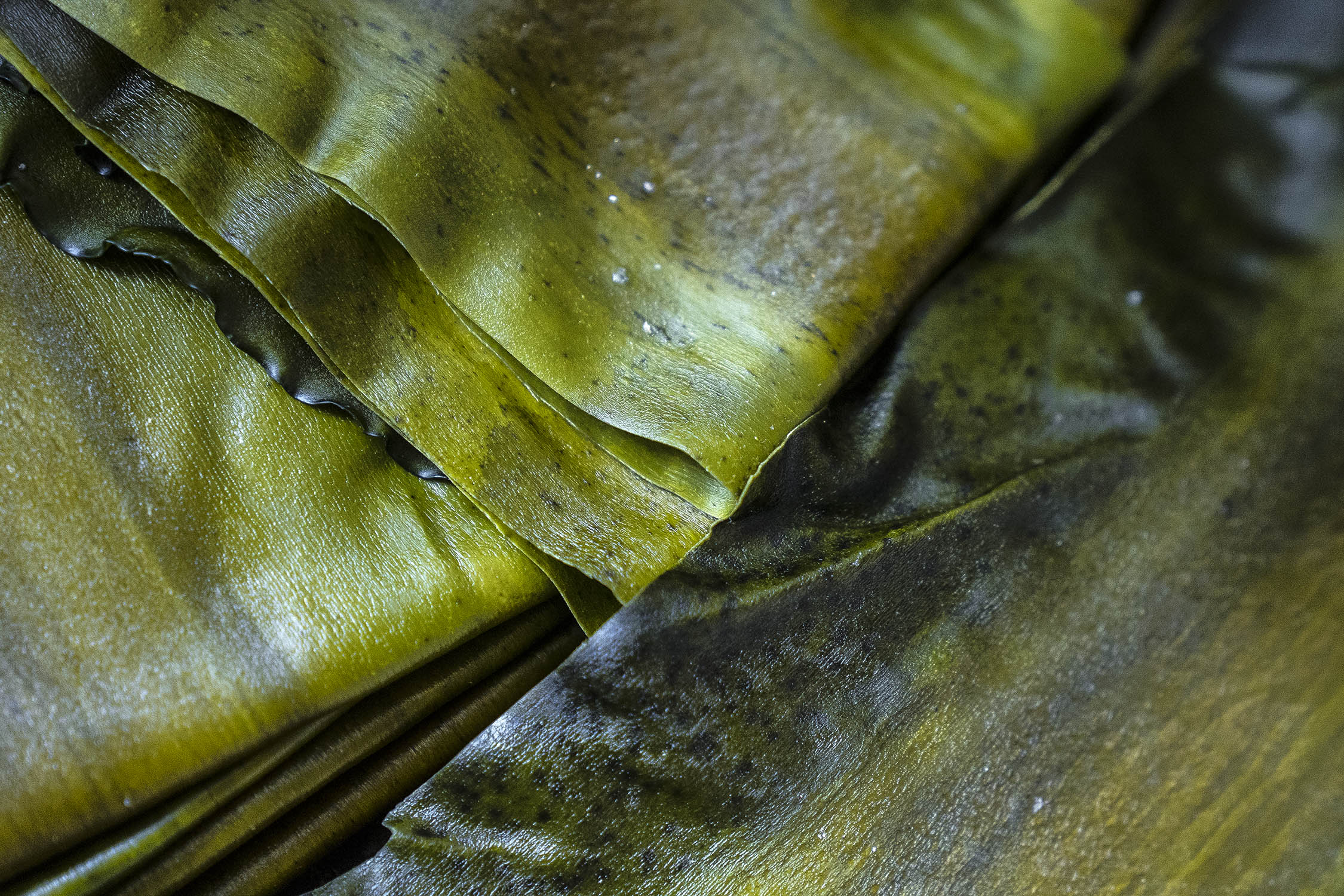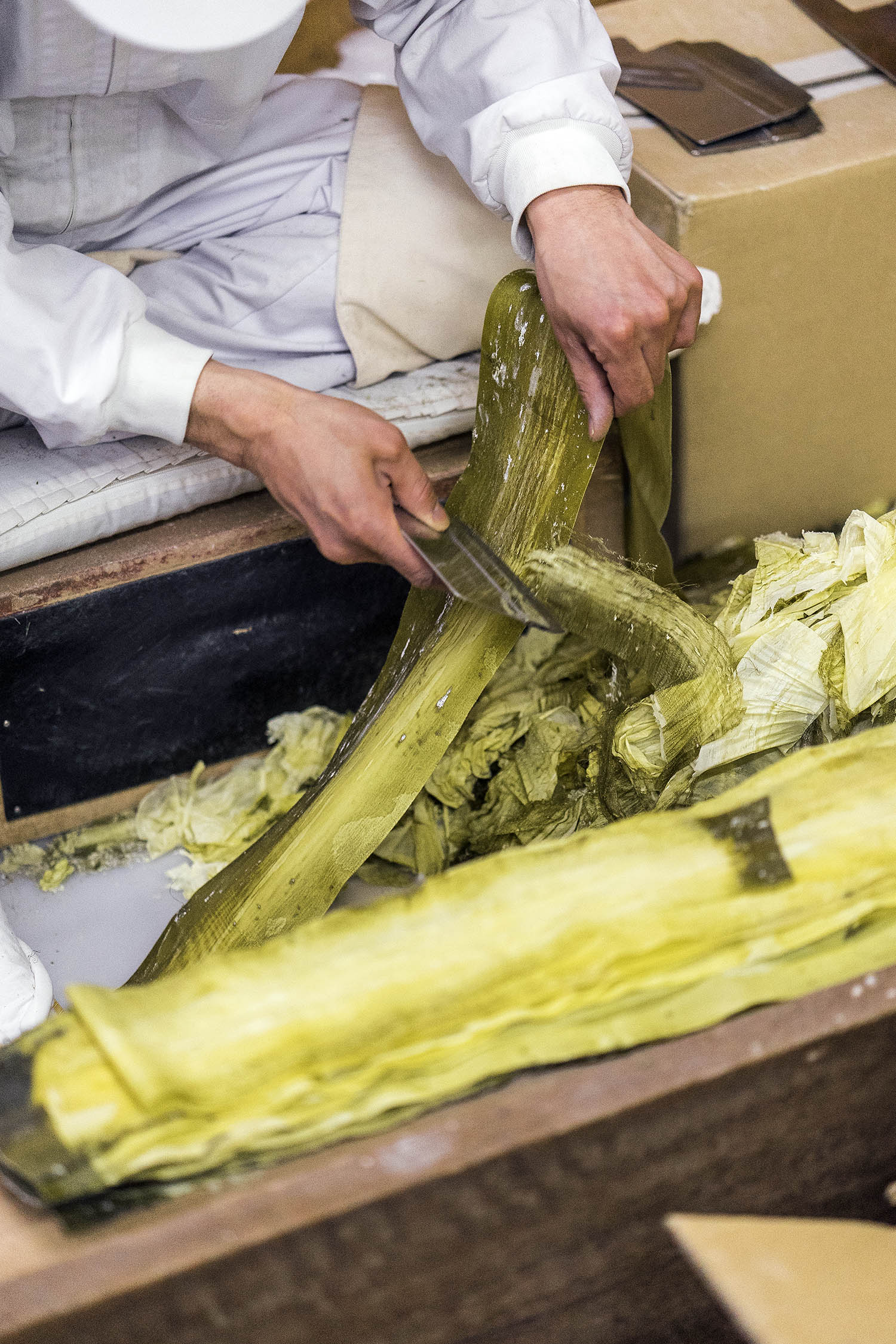A COMMUNITY OF CRAFTSMEN // SAKAI
We came to Sakai for knives, but we left with seaweed.
“Everything starts in Sakai” is the catchphrase most Sakai locals go by, and, once you’re in this thriving Japanese city, you’ll see they’re not wrong. In our last post, I looked at how Sakai grew to become the crafty hub it is today as a result of artisans from around the country gathering to help construct the emperor’s giant burial tomb in the 4th century.
After the build, they stayed, and this city of makers became a production centre for guns and samurai swords, and, later, kitchen knives. But more than just the epicentre of weapons and blades, Sakai is also where you'll find the original workshops making Japanese incense, bicycles, carp streamers, hand woven rugs, the chusen fabric-dyeing technique, Japanese tea ceremonies, the art of wagashi (Japanese confectionery) and hand-shaved kombu. This is a city of Japan's traditions.
We had come to Sakai to see some of Japan’s sharpest knives forged, but what we discovered was a community of craftsmen, each one relying on the other to continue their art. Just like the knife forgers who need the sharpeners and the handle makers to create their products, kombu makers rely on these expert knife makers to make tools sharp enough to shave their oboro kombu – paper-thin slivers of seaweed measuring less than 0.05mm.
Kombu has been a been a part of Japanese cuisine since 6000BC, when it was used as a salt supplement before the process of making salt was discovered. Back then it was simply boiled and plated, but now it’s an essential ingredient in most Japanese soups, sushi, onigiri rice balls and many more dishes. Grown and harvested in Hokkaido, Japan’s most northern island, it made its way down to Sakai via Kyoto and the ‘Kombu Road’, an east-to-west route along the Yodo-gawa River during the 17th century Edo period.
Some of the oldest manufacturers left in the city can be found at Goda Shoten, a humble little factory, that’s been shaving kombu by hand for the past 71 years. “Sakai had such good knife-making industries, so it was here that kombu-shaving began,” says Mitsunobu Goda, President of Goda Shoten. The three-story wooden shop feels much less like a factory and more like a home; pictures of his family hang on the wall, and the workers all work together in one small room. Mitsunobu walks us down a flight of groaning stairs to a neatly packed basement that smells just like the sea – this is where he stores all his kombu from Hokkaido.
“People in Hokkaido don't eat kombu, it's just used as an export,” explains Mitsunobu. In the past, he says, Sakai locals would trade traditional cotton cloth and rice for Hokkaido’s kombu, where the seaweed was essential for Osaka and Kyoto cuisines.
Sakai is famous for tesuki kombu, three hand-shaved styles known as oboro, tororo and battera. Oboro are the wide strips, transparently thin and covered with a pale green, almost wood-grain pattern. This strong, paper-like seaweed is used to flavour soups and wrap rice balls. Tororo is shaved into tiny soft strands to top noodle and rice dishes, adding punchy, salty flavour. The centre of the kombu, what’s left over after shaving, is cut into thicker rectangles known as battera, and mostly used by sushi chefs to top special mackerel sushi.
“We shave both oboro and tororo kombu by hand, not with a machine,” says Mitsonobu. “This is very rare,” adds Hiroki Yamanaka, our guide for the day. While oboro kombu must be shaved by hand to ensure the perfect texture and quality, tororo kombu is often shaved with a machine. “Goda Shoten are the only factory that does this,” says Hiroki.
To shave the seaweed by hand, a sharp, short akita knife is needed. “The tip part of the knife is curved a little… it’s very difficult to create this. This technique can only be done best in Sakai,” explains Mitsunobu. Goda Shoten use local Masahiro knives, and while they are the sharpest in the business, they don’t last long in this hard-working environment. “This akita can only work for 20 minutes before it becomes dull, so we have to change the knives very often," says Mitsunobu.
The tororo knife is similar, but with 200 tiny ridges dividing the blade – sharp little claws to shred the kombu into feathery strips.
We walk into the production room, just two small rooms on the second level of Mitsunobu’s factory. The air here is sour – the dried kombu is soaked in a master vinegar that’s never emptied – the secret to Goda’s special flavour. In the shaving room, six master craftsmen and women sit on little pillows on the floor, shaving tororo, oboro and slicing perfectly-measured rectangles of battera. “The oboro is the most difficult. You have to make sure you shave it perfectly without leaving any scratches on the battera, as that will be used, too,” says Mitsunobu.
It can take up to three years to master the craft, and Mitsunobu says that many young people aren’t interested in a job like this anymore. Factories in Sakai have gone from 150 to just three left in the city – a result of industrialisation and the older craftsmen retiring. “It’s getting better though,” says Hiroki. “Recently young people seem to have more of a desire to learn a skill with their hands. A couple of years ago they opened a school here to teach the craft, and a lot of young people applied.” Mitsunobu points out a couple of the graduates working here today, evidence the craft is still hanging on.
We end the day at Momofuku Udon, a popular local udon restaurant that uses Goda Shoten kombu to flavour their soup. Hiroki recommends their tempura prawn udon – the broth is flavoured with oboro kombu and delicately sprinkled with the soft strands of tororo as it’s served. It’s full of flavor – a sweet, mellow base with a kick of salty and sour tang thanks to Mitsunobu’s kombu. It’s one of the best udon soups I’ve ever had, made special with one of Japan’s most laborious, handmade and essential cooking ingredients. Something that’s also in danger of becoming increasingly rare to find.
Thank you to Mitsunobu, for letting us explore his factory, and Hiroki, who is in charge of promoting Sakai's traditional industries and also running the incredible Crafts Museum, a place that will ensure these celebrated traditions are never forgotten.
PHOTOGRAPHY: LEIGH GRIFFITHS
WORDS: ELOISE BASUKI
All words and images are under copyright © 2019 strangertalk.co
























